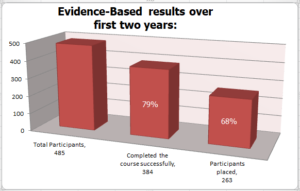Statistics and numbers have their uses, mostly depending upon the agenda
spinners manipulating them. While numbers reveal much about a
particular situation, the fact remains, they can also obscure things,
creating more of a head-scratching event than a cerebral epitome.

Question, if numbers are black and white,
how can they also turn into grey on a subjective whim? To illustrate,
let’s concentrate on what we know best… the criminal element, namely
recidivism.
It’s easy to get caught up in discussing recidivism rates, budget allotments, and what really works as the amount of money involved is racking up beyond infinity. Given the nature of subjective realism, debating crime stats, studying methodologies, and examining sample sizes is akin to trying to close a cracked Pandora Box.
Unfortunately, without context and content, numbers on a spreadsheet are simply just that: numbers on a spreadsheet.
To be real, numbers mean nothing, what matters is living a good life,
where fear no longer exists and where dreams can (and do) become
reality through hard work, commitment, hope, and empowerment.
Truth is, 2CU is not here to crunch numbers (though we have a few to
crunch), we’re here to change lives and bring light to an otherwise
darkened world. Offering hope, especially for the justice-involved, and
raising the torch for all to follow.
For a moment, let’s look beyond retention rates and placement numbers and uncover the human element
so many simply don’t understand or chose not to see. Let’s look through
the eyes of Steven, a graduate of our program and one who happens to
wear a number on his back.
Steven was reared to see the world where struggle was a way of life
and giving up on the system (and self) was just the way it was. He saw a
dark, dangerous place with no security, no safety net, no support, and
definitely no future. Lacking a father figure at home, he sought
acceptance and guidance in the street.
Didn’t take long for a gang to offer Steven what he felt was lacking.
A series of arrests would give him a record and a narrower path to
follow for the remainder of his years.
After release, Steven resisted change, claiming there was no way
anyone would give him a chance. His stint in prison left a heavy mark on
him. Holding a CHE Quotient of less than 1.5, his main obstacle was himself and the barriers HE created for himself.
Two months after release and slipping back into his old routine, he
came to realize (due another near-by) destiny would be behind bars. He
got picked up but was gifted a second chance.
Avoiding a return to prison depended upon his finding himself and
gainful employment, but the difficulty he faced in finding work with his
past was daunting. Steven was despondent, feeling that the stigma of
his past would never go away.
Looking at the numbers, he had no chance… but you can’t always bet on the numbers…
(Going to slow this
down for now, will conclude tomorrow when we will uncover Steven’s CHE
Quotient after the program and what path he is venturing)
Richard Milaschewski,
2ndChanceUniversity.org

 Contact us at (407) 878-0474
Contact us at (407) 878-0474




 Thanks for being a great mentor !!!!
Thanks for being a great mentor !!!!